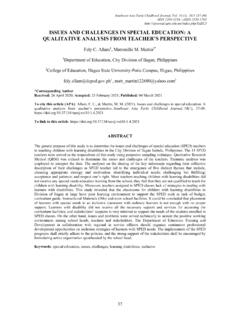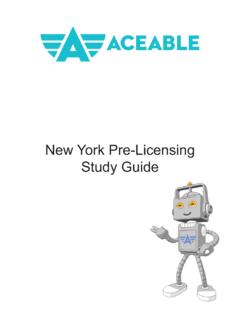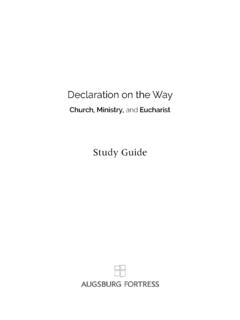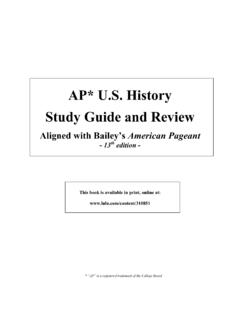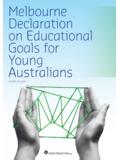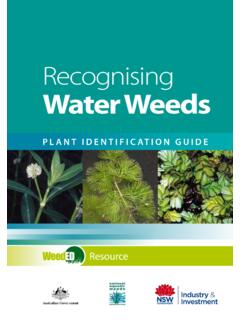Transcription of U.S. CONSTITUTION TEST PREPARATION GUIDE
1 CONSTITUTION TEST PREPARATION GUIDE This is only a study GUIDE with some examples. The Education Department strongly recommends that you utilize the following sources to study for this exam: 1. The CONSTITUTION of the United States of America, including full texts of all Amendments (see attached copy from the National CONSTITUTION Center in Philadelphia). 2. A history of landmark Supreme Court cases such as Saul K. Padover's The Living CONSTITUTION . (McHenry Library, call # KF 3. The CONSTITUTION of the U. S., Floyd G. Cullop, Mentor, $ (especially the questions and answers in the last section). 4. A general American History textbook, particularly the sections on the Revolution through 1865 (special focus on the Constitutional Convention). THE CONSTITUTION The Preamble to the CONSTITUTION : "We the People of the United States, in Order to form a more perfect Union, establish Justice, insure domestic Tranquility, provide for the common defense, promote the general Welfare, and secure the Blessings of the liberty to ourselves and our Posterity, do ordain and establish this CONSTITUTION for the United States of America.)
2 " Amendments Procedures for passing an amendment to the CONSTITUTION (Article V): 2/3rds of both Houses propose Amendment to the CONSTITUTION . OR On the Application of the legislatures of 2/3rds of the states, shall call a Convention for proposing an Amendments to the CONSTITUTION . In either case, must be ratified by the legislatures of 3/4ths of the states or by conventions in 3/4ths of the states. First Ten Amendments: Bill of Rights (ratified in 1791) Brief description Read full text in CONSTITUTION ): I. Freedom of religion, speech, press, assembly, and petition II. Right to bear arms III. Housing of troops in time of by owner s consent. In time of war, in manner prescribed by law. IV. Prohibits unreasonable search and seizure V. No person can be tried for the same offense twice (double jeopardy), nor witness against him/herself; nor be deprived of life, liberty or property without due process; nor have property taken for public use without compensation.
3 VI. Right to a speedy trial by an impartial jury of the state; informed of nature and cause of accusation, confronted by witnesses against him and obtain witnesses in favor; right to legal counsel. VII. Right to a trial jury in suits at common law where value exceeds $20. VIII. Prohibits excessive bail fines & cruel or unusual punishment IX. Rights outlined in the CONSTITUTION do not deny others retained by the people. X. Powers not given to federal government nor prohibited by it to the Senate, are reserved to the States, or to the people. Amendments Eleven through Twenty-six: XI. Suits against a state must be tried in state courts XII. Prescribes procedures by which President & Vice President are elected: Determined by electoral college in states; majority of votes wins.
4 If no person has a majority of votes the House of Representatives shall elect by ballot. XIII. Slavery or involuntary servitude shall not exist in US except as a punishment for crime where the party has been duly convicted. XIV. States cannot make or enforce law that abridge privileges of citizenship. XV. Guarantees the right to vote regardless of race, color, or previous condition of servitude XVI. Gives Congress the power to establish and collect taxes on income XVII. Establishes 2 senators from each state elected by citizens of the state for a term of 6 years. XVIII. Prohibition of the manufacture, sale, transportation, importation or exportation of liquor. XIX. Guarantees women the right to vote: the right to vote cannot be denied or abridged based on sex.
5 XX. Terms of President and begin on Jan 20th; terms of Congress on Jan 3rd. Congress will assemble at least once each year beginning Jan. 3rd. If the President-elect dies before assuming office, the shall become President. If the President-elect fails to qualify before assuming office, the VP- elect will act as President until a President shall have qualified. If neither qualify, Congress may declare who will act as President until the President-elect or qualify. XXI. Repeal of prohibition (18th Amendment). XXII. The President is limited to serving 2 terms. get vote for pres/VP. XXIII. The District of Columbia may appoint a number of electors of President and Vice President equal to the number allowed if they were a state. XXIV. Right of citizens to vote in any primary or other election for Pres.
6 , VP & Congress w/out poll tax. XXV. If case of the President s removal from office, death or resignation, VP becomes President. If vacancy in VP, president nominates replacement. If President is unable to fulfill powers and duties (through written declaration by the President or VP and principal officers of the exec. Cmte.), they are discharged by the VP (acting President). President resumes duties after he or VP and principal officers of the exec. cmte. submit written declaration that no inability exists. XXVI. Right to vote of citizens 18 or older. COURT CASES Individual Rights Vs. The State 1857: Dred Scot vs. Sanford, Ruling by the Supreme Court that people of African descent imported into the United States and held as slaves (or their descendants, whether or not they were slaves) were not protected by the CONSTITUTION and could never be citizens.
7 (this part overruled by the 14th Amendment). 1919: Schenck vs. , Free speech can be limited when clear & present danger present to the country (defendants accused of persuading draftees to break law). 1961: Mapp vs. Ohio, Evidence obtained in violation of the Fourth Amendment, which protects against "unreasonable searches and seizures," may not be used in criminal prosecutions in state courts, as well as federal courts. (4th Amendment applies to states). 1966: Miranda vs. Arizona In order for any inculpatory or exculpatory statements to be used against the defendant in court, while in police custody, he or she must be informed of his or her rights: right to an attorney, right against self-incrimination. Limits the power of local police to extract confession from persons accused of crimes.
8 ("You have the right to remain silent .. ") School Related Decisions 1896: Plessey vs. Ferguson, Upheld the constitutionality of state laws requiring racial segregation in private businesses (particularly railroads), under the doctrine of "separate but equal." Provided the legal foundation to justify many other actions by state and local governments to socially separate blacks and whites. (Overturned in 1954 by Brown v. Board of Education). 1943: W. Virgina School Board vs. Barnette, Held that the Free Speech Clause of the First Amendment to the United States CONSTITUTION protected students from being forced to salute the American flag and say the Pledge of Allegiance in school. 1954: Brown vs. Board of Education-- Landmark decision of the United States Supreme Court that declared state laws establishing separate public schools for black and white students and denying black children equal educational opportunities unconstitutional.
9 (Overturned the Plessy v. Ferguson, 1896) 1955: Brown vs. Topeka Board of Education, Separate but equal has no place in schools. 1963: Abington School District, Pa vs. Schempp, (combined with the case Murray vs. Curlett) Declared school-sponsored Bible reading and state sponsored prayer in public schools to be unconstitutional. State vs. Federal Rights 1824: Gibbons vs. Ogden, A case related to the Commerce Clause empowering Congress to regulate interstate and foreign commerce (Article I, sec. 8). Defined commerce expansively, far beyond mere exchange of goods to include new forms of transportation (steamboats), etc. 1920: MO vs. Holland, Supremacy of Congress' treaties over state constitutions. 1937: West Coast Hotel vs. Parrish, State & Congress can regulate minimum wage.
10 1962: Baker vs. Carr-- Reapportionment (attempts to change the way voting districts are delineated) issues present justifiable questions, thus enabling federal courts to intervene in and to decide reapportionment cases. States need to draw their electoral districts according to population. 1793: Chisholm vs. GA. A state could be sued by non-resident (federal courts had jurisdiction between a state and citizen of another state or country). Later overruled by the 11th Amendment. 1803: Marbury vs. Madison, A landmark case, formed the basis of the exercise of judicial review in the (the idea that courts may oversee and nullify the actions of another branch of government). The landmark decision helped define the "checks and balances" of the American form of government.



